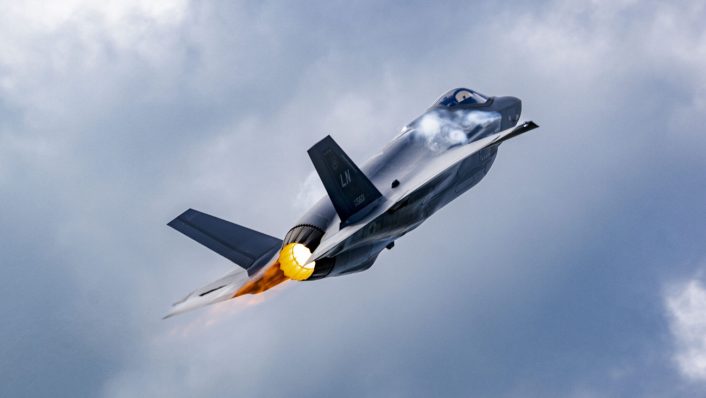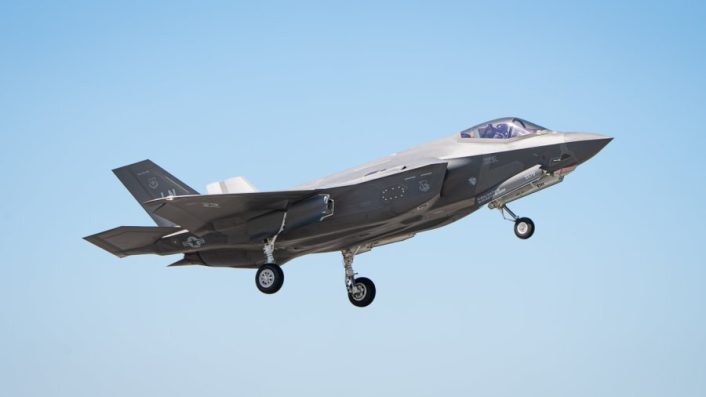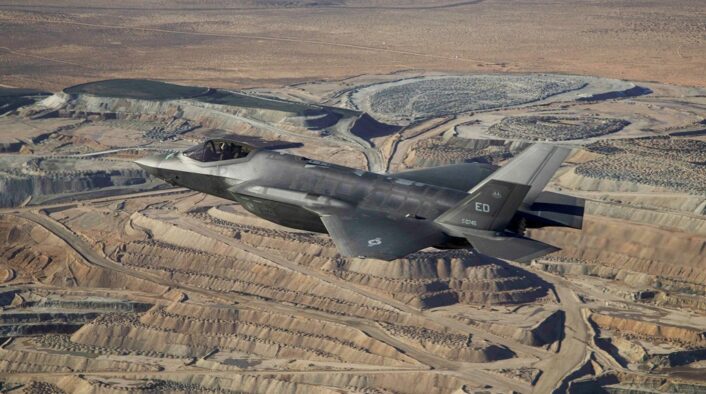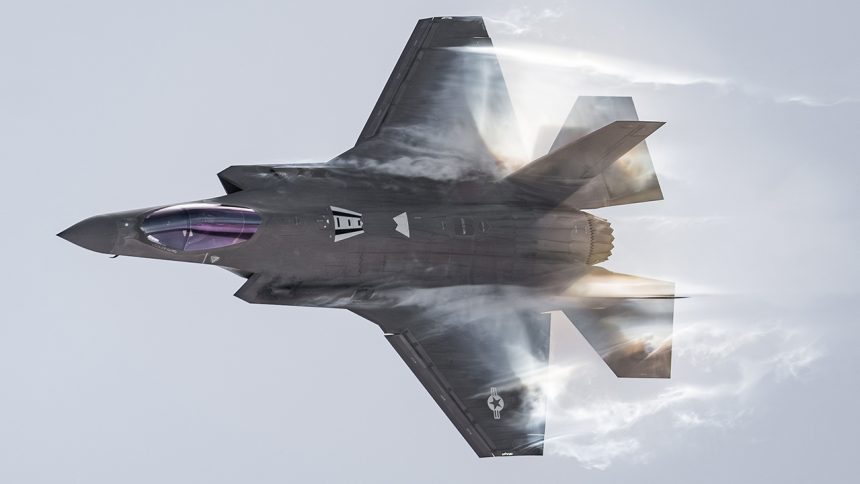The Technology Refresh-3 is the backbone for the Block 4 upgrades, needed for newer weapons, sensors, data processing and target acquisition capabilities.
The F-35 JPO (Joint Program Office) and Lockheed Martin on Jul. 19, 2024 announced the deliveries of the first two TR-3 Technology Refresh-3 (TR-3)-configured F-35 aircraft. One F-35A Lightning II was delivered to Dannelly Field, Alabama, and the other to Nellis Air Force Base, Nevada.
“We have initiated a phased approach to the delivery of TR-3 F-35 aircraft,” said Lt. Gen. Mike Schmidt, the JPO’s Program Executive Officer. “The first phase will deliver jets with an initial training capability in July and August. By the end of August, we will be delivering jets with a robust combat training capability, as we continue towards the delivery of full TR-3 combat capabilities in 2025. Our focus has been on providing our customers with aircraft that are stable, capable, and maintainable, and this phased approach does that.”
The deliveries come after a full year of delays, owing to problems with the TR-3 hardware and software. Comprising additional computing power, Pentagon officials have described TR-3 as the “backbone” for the Block 4 upgrades, needed for newer weapons, sensors, data processing and target acquisition and identification capabilities.
Several jets had been piling up at Lockheed Martin’s facilities since July 2023, when the deliveries were halted, leading to significant backlog. TR-3 was supposed to be ready by April 2023, and the upgrade overshot the budget by $1 billion.

Lockheed Martin announced the development on X: “We recently began delivering TR-3 configured F-35s. These upgraded aircraft are equipped with combat training capabilities – a crucial step toward achieving full operational capabilities.”
We recently began to deliver TR-3 configured F-35s. The upgraded aircraft in this initial phase are equipped with combat training capabilities—a key step toward full operational capabilities. pic.twitter.com/VWMvWFV761
— F-35 Lightning II (@thef35) July 19, 2024
Long awaited upgrades
According to JPO, the newly delivered aircraft follow standard government acceptance procedures that include final airworthiness certifications and check-out flights. “TR-3 and Block 4 represent a critical evolution in capability and their full development remains a top priority for us,” said Lockheed Martin vice president and general manager for the F-35 program Bridget Lauderdale.
“These and further software updates over the life of the program will ensure the F-35 continues to be an effective deterrent and the cornerstone of joint all-domain operations now and decades into the future.”
“I am extremely proud of all the hard work the government and industry team have put into the delivery of TR-3 configured F-35s,” Schmidt added. “This is an important first step, and although much work remains, I am confident our team will work tirelessly to achieve the desired and necessary results that our warfighters, allies and customers require.”
F-35 Joint Program Office and Lockheed Martin announced that deliveries of first Technology Refresh-3 (TR-3) configured F-35 Lightning II began on July 19. Two F-35A Lightning IIs were delivered, one to Dannelly Field, and one to Nellis Air Force Base.https://t.co/9RHf22Og9w pic.twitter.com/Qh7wYWkjCO
— Ryan Chan 陳家翹 (@ryankakiuchan) July 20, 2024
Troubled software
Since July 2023, the Pentagon had stopped accepting new F-35 jets owing to issues between the F-35’s hardware and the TR-3 software coding. Specifically, the TR-3 software had trouble supporting the F-35’s radar and electronic warfare systems. Some test pilots had even claimed about having to reboot their radar and EW systems mid-flight, according to a GAO (Government Accountability Office) report from May 2024.
“Program officials stated that early versions of radar and in-flight systems software can commonly experience rebooting issues,” the GAO said. “However, even after being nearly a year delayed, TR-3 software continues to be unstable, according to test officials.”
The latest delivery is consistent with a September 2023 filing by Lockheed Martin with the SEC (Securities and Exchange Commission), saying at the time that it anticipates “delivering the first TR-3 jet between April and June 2024.”

Scaled down version
The issues had led the Pentagon to stop accepting the deliveries before certain tests were complete. Subsequent reports said that the F-35 JPO, Lockheed Martin and the DoD were working on a plan for the DoD to accept F-35s with an interim version of the TR-3, with reliable and maintainable software.
The “truncated” version would provide part of the capabilities, with the DoD calculating that some of upgrades relevant to the present demanding high-tech war scenario before peer competitors was better than nothing.
The Integrated Core Processor developed by L3Harris, is central to this upgrade. It exponentially enhances data processing and sensor fusion speeds that aid optimum decision-making and pilot assistance in complex and dangerous missions. The TR-3 upgrade also includes a newer, larger display.
Breaking Defense said that this “interim software fix” allowed the delivery of the two F-35A and the Pentagon’s acceptance of the new aircraft. “Under the new acceptance plan, jets will be delivered with interim software that facilitates training, but a second software drop that enables combat capabilities likely won’t be available for at least another year.”

During the delivery halt, Lockheed continued to build planes equipped with TR-3 but had been forced to warehouse them. The exact number of jets on hold is unclear, though Lockheed officials hinted as many as 120 could be “undelivered” this year. Bloomberg had reported in Sep. 2023 that the Pentagon was withholding $7 million per aircraft, with Lockheed Martin potentially not receiving $800 million in dues.
Allies and F-35 partners would be relieved
The resumption of deliveries would be welcomed across the US, its allies and F-35 partner nations, some of whom had rejected the F-35 since it did not come with the full set of upgrades. For an instance, in Aug. 2023, Belgium had refused to accept two F-35 jets that were slated to finish production on the assembly line by December of that year.
This was “because of a delay in the introduction of new software and screens,” Brussels Times said. Belgium’s contract with the US stipulated that the F-35s were to possess the latest and most modern configuration.
According to the Belgian Defence Ministry, the TR-3 and the Block-4 “make the F-35 significantly more capable of handling today’s modern ground and air threats, both offensive and defensive.”
The Aviationist reported that on May 14, 2024, an F-35A produced for the Belgian Air Force (tail code FL003) flew for the first time from Lockheed Martin’s facility in Fort Worth in Texas.









